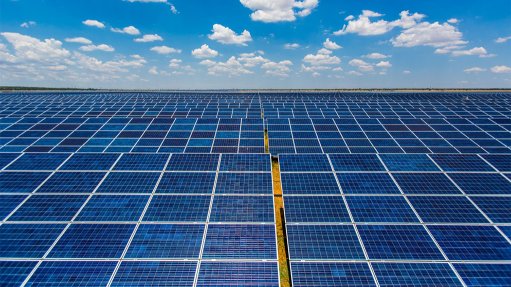
South Africa’s fleet of utility-scale variable renewable energy (VRE) plants contributed to limiting the extent of load-shedding instituted by Eskom during the first quarter of 2019 by 46%, new analysis by the Council for Scientific and Industrial Research (CSIR) shows.
The report adds that, absent the instantaneous contributions from the VRE fleet of up to 2.3 GW during those periods when rotational cuts were made, Eskom would have been forced to raise the level of load-shedding instituted from Stage 4 to Stage 5, or even Stage 6.
At Stage 1, Eskom cuts a minimum of 1 000 MW, which rises by 1 000 MW for every subsequent stage declared. At Stage 4, between 4 000 MW and 5 000 MW is shed.
A total of 769 GWh of power was shed during the first quarter, with 595 GWh cut in March alone, when the utility resorted to ten days of consecutive load-shedding.
At points, Eskom declared Stage 4 load-shedding, as a results of high levels of planned and unplanned outages across its coal fleet, the loss of imports from Cahora Bassa, in Mozambique, after the deadly Cyclone Idai affected transmission lines carrying power to South Africa, and the depletion of water and diesel resources at its pumped-hydro schemes and open-cycle gas turbines respectively.
Compiled by the CSIR Energy’s Centre’s Jarrad Wright and Joanne Calitz, the analysis shows that the utility-scale VRE fleet contributed 2 975 GWh, or 5.3% to the power system during the first quarter.
Monthly contributions ranged from 4.9% to 6%, weekly contributions from 4.1% to 7% and daily contributions from 2.9% to 7.7%.
South Africa’s VRE fleet comprised 1 479 MW of solar photovoltaic capacity, 2 078 MW of onshore wind and 500 MW of concentrated solar power plants.
During load-shedding periods, the utility-scale VRE fleet contributed 357 GWh of the total 2 975 GWh from VRE during the quarter 2019.
In other words, load-shedding could have risen from 769 GWh to 1 126 GWh, a 46% increase, had it not been for the contribution of the VRE fleet.
The CSIR analysis also shows that the 272 hours of load-shedding in 2019 represented the most intensive period of load-shedding since 2015, when 858 hours of rotational cuts were implemented involving 1 325 GWh.
In 2015, however, load-shedding was mostly instituted during the high-demand evening peaks, while the 2019 cuts covered both days and nights.